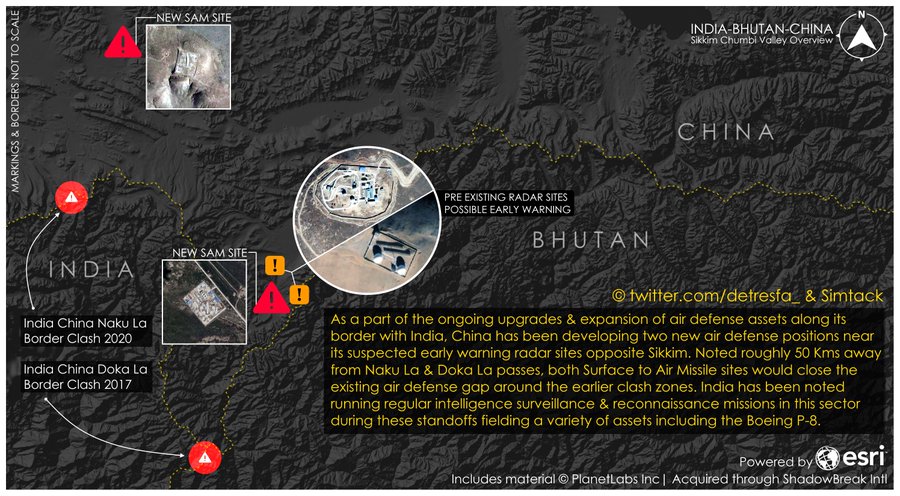Amid renewed tensions between Indian and Chinese PLA troops in the Ladakh region, many experts now believe that the PLAGF (PLA Ground Force) has deployed their HQ-9 long-range air defense systems along the LAC; the de-facto border between India and China.
US Defence Giant Lockheed Martin To “Commoditize” F-16s; Aims To Sell F-21 Jets To India
According to information published by the Forbes, the satellite imagery observers have pointed out two new Surface-to-Air Missile (SAM) sites in the Chumbi valley of Tibet, a place at the tri-junction of Indian, Bhutanese, and Tibetan border which lies at the eastern periphery of Sikkim.
The place was notably a hotbed for clashes during the 1962 Sino-Indian war and adjoins the Doklam Plateau, which saw a fierce stand-off between Indian and PLA troops in 2017.
Not Only Stealth F-35s, Russian S-500 Missile Can Also Shoot-Down Low-Orbit Satellites
The analyst mentions that the sites where the SAM batteries have been placed are situated just 50 kilometers from where the 2017 India-China skirmishes occurred. While the reports do not mention the type of missiles deployed, experts suggest that these could be, with a high degree of possibility, the HQ-9 systems.
According to the recent reports by the Pentagon, the PRC has one of the world’s largest forces of advanced long-range surface-to-air systems—including Russian-built S-400s, S-300s, and domestically produced systems—that constitute part of its robust and redundant integrated air defense system architecture.
Not Only Stealth F-35s, Russian S-500 Missile Can Also Shoot-Down Low-Orbit Satellites
The SAM facilities that have been made in the Chumbi valley are strikingly similar to the ones built around the Mansarovar Lake, the analysts said.
“As a part of the ongoing upgrades & expansion of air defense assets along its border with India, China has been developing two new air defense positions near its suspected early warning radar sites opposite Sikkim,” according to the caption on the Twitter satellite imagery graphic.
“Noted roughly 50 km from Naku La and Doka La passes, both surface to air missiles sites would close the existing air defense gap around the earlier clash zones. India has been noted running regular intelligence surveillance & reconnaissance missions in this sector during these standoffs fielding a variety of assets including the Boeing P-8 [patrol aircraft]”
However, according to the information published by Forbes, the research director for the U.S. Air Force’s China Aerospace Studies Institute, Rod Lee, says that these constructions are not that ‘new’ as claimed. Their constructions had begun in 2019.
Pakistan Could Acquire Semi-Stealth, 4.5 Gen Jets From China To Counter Indian Build-Up Of Rafales
The Indian Air Force maintains a strong presence of its air-superiority fighters, the Su-30MKI and the upgraded supersonic interceptors the MiG-21 ‘Bisons’ in the region. “Either way, more Chinese anti-aircraft missiles in Tibet will be another headache for Indian military planners faced with Chinese incursions along the 2,500-mile Sino-Indian border”, Michael Peck writes for the Forbes.






